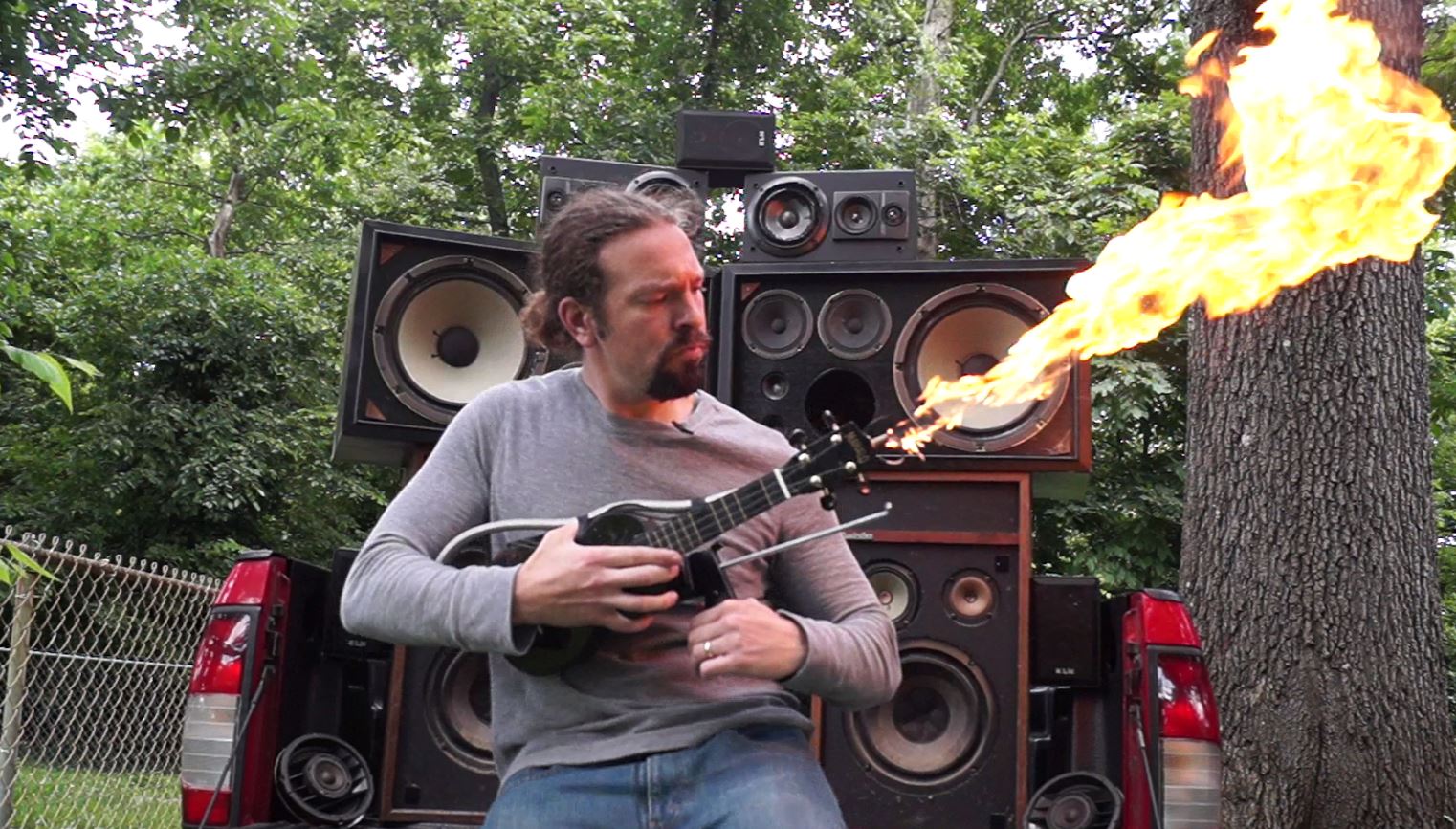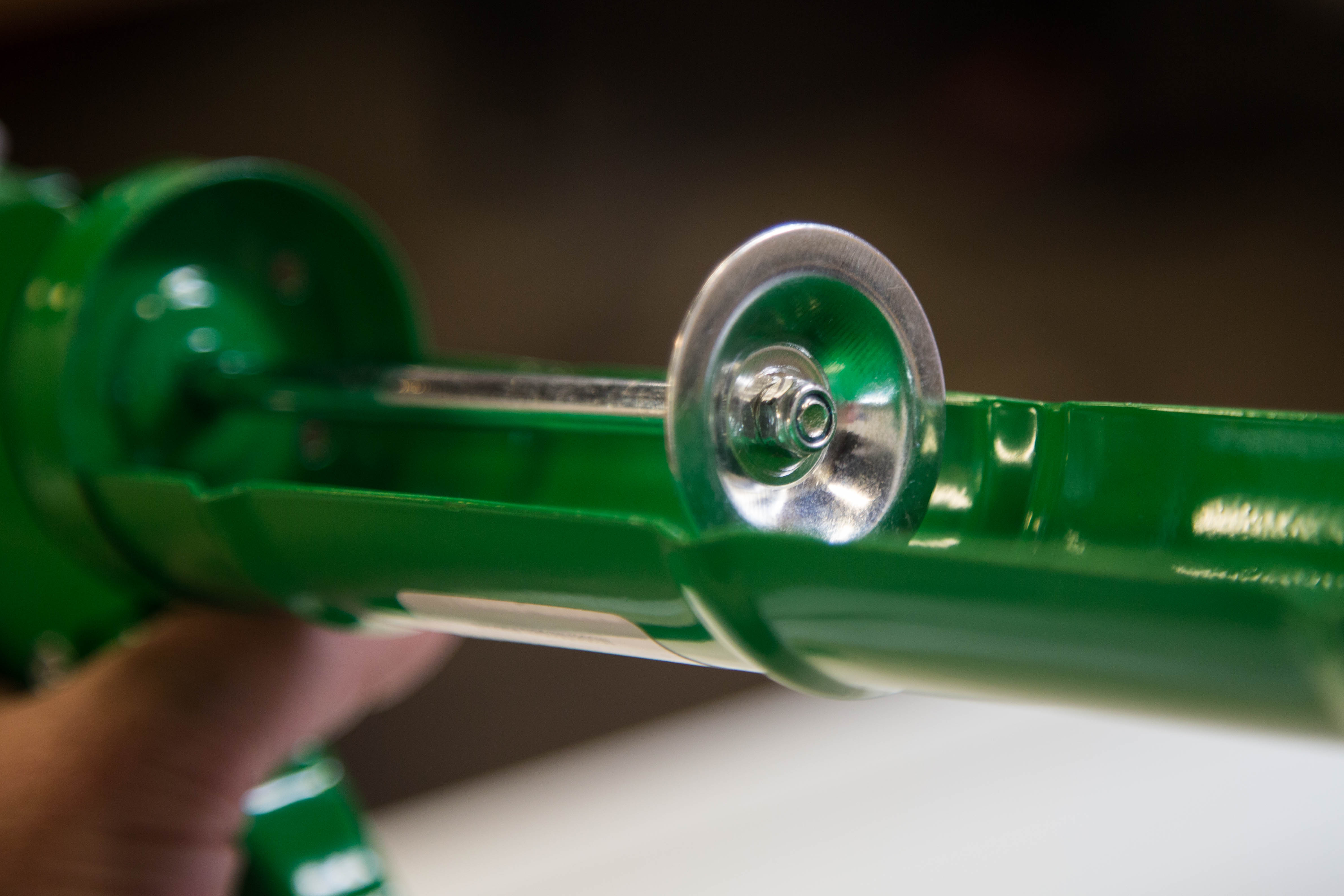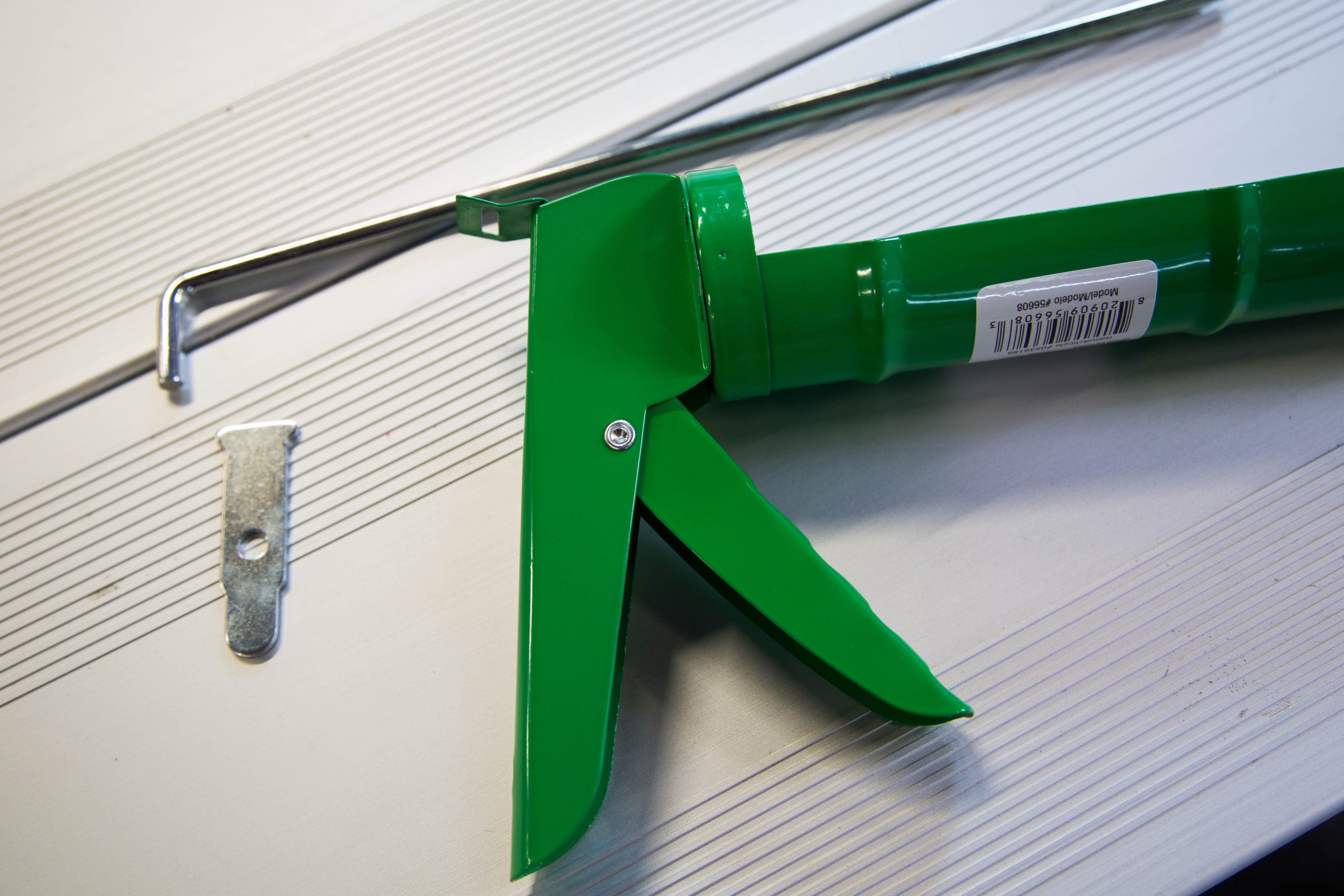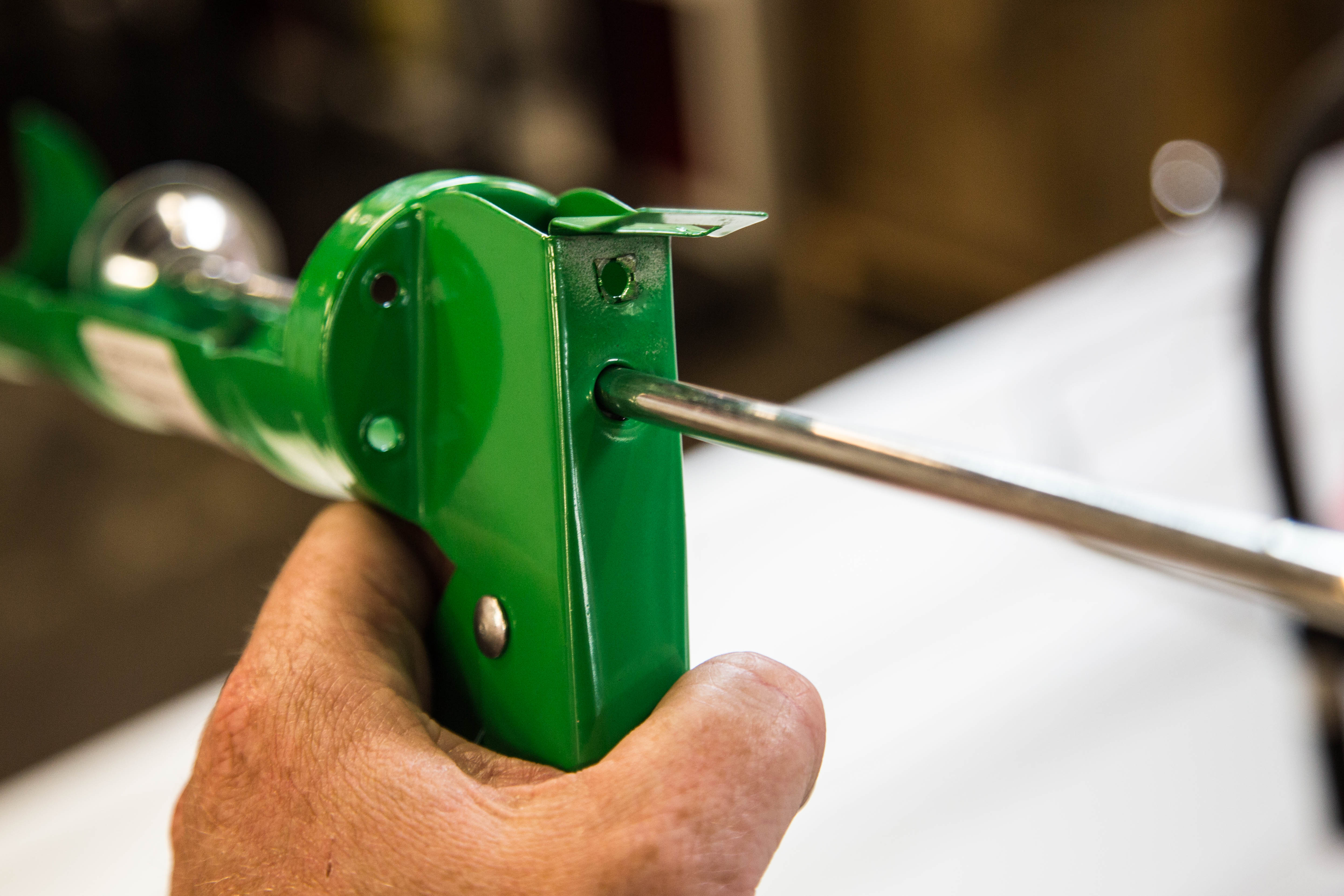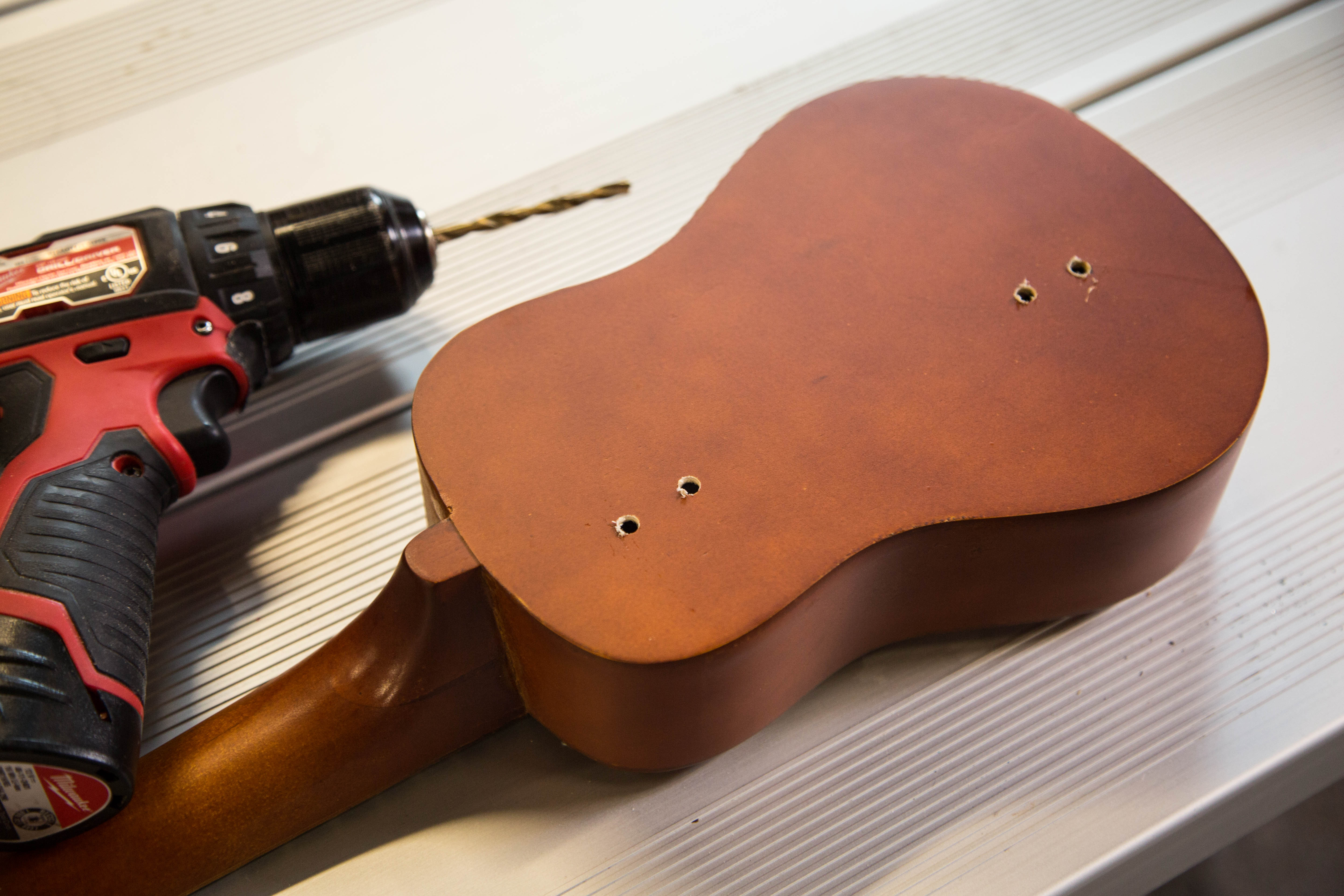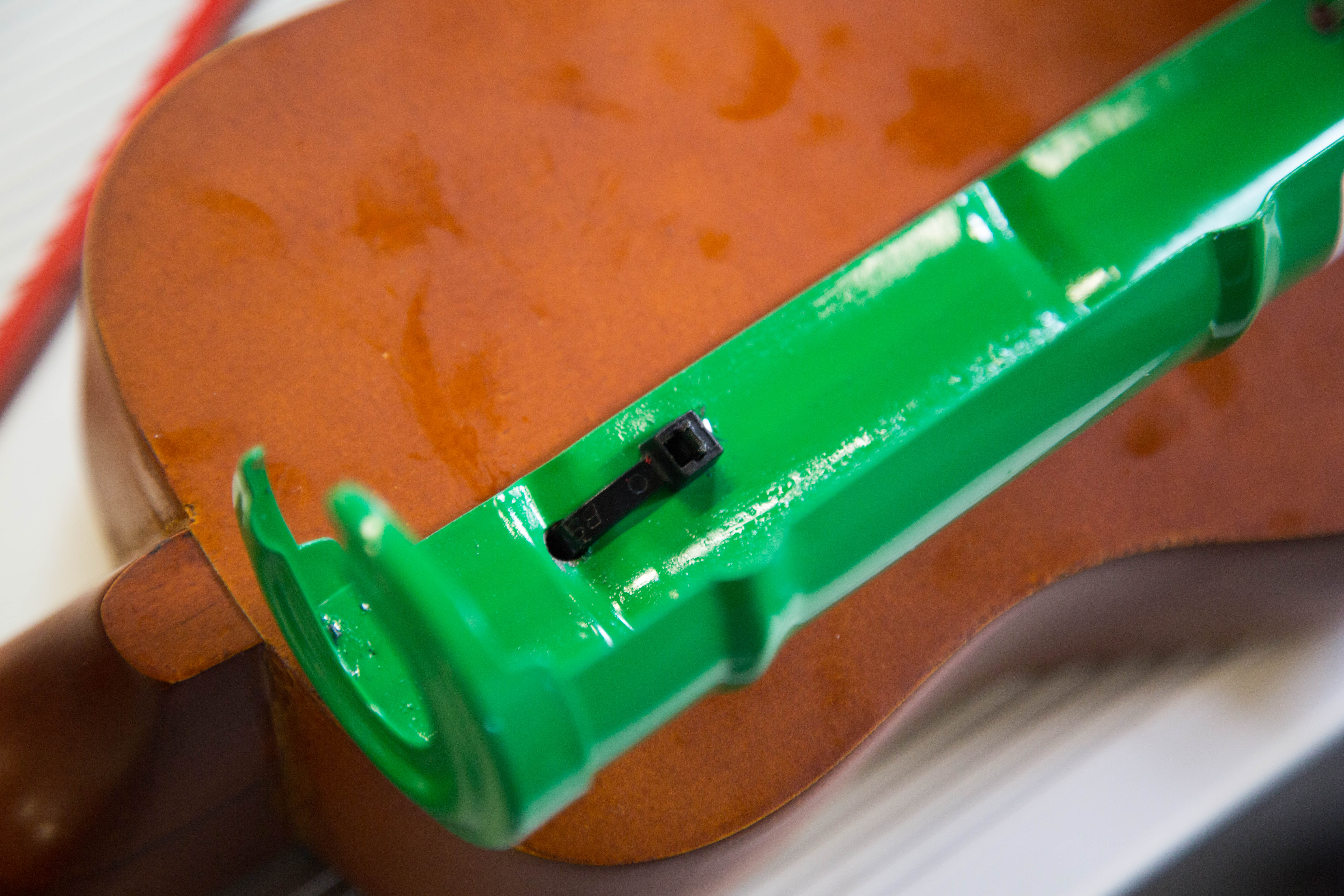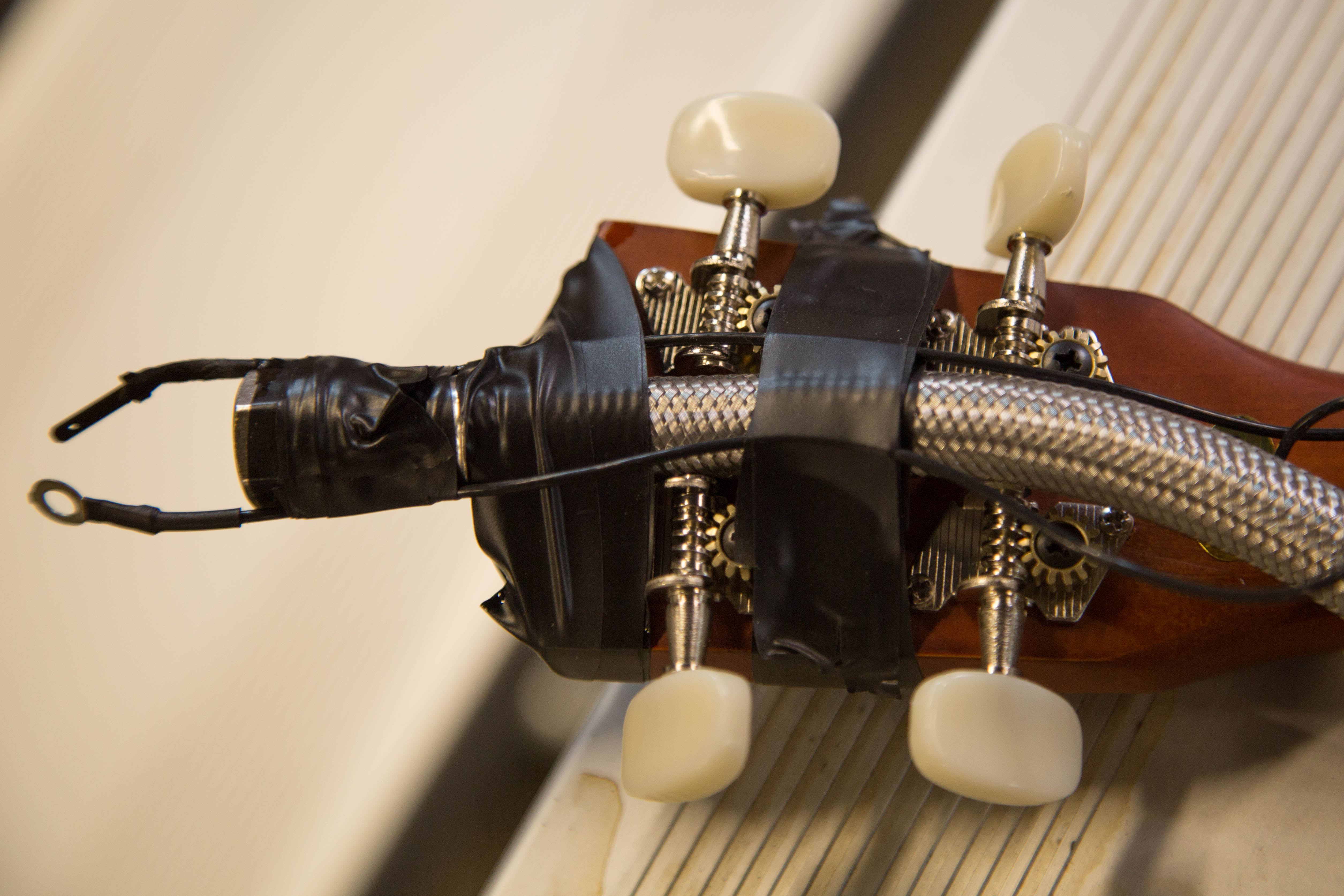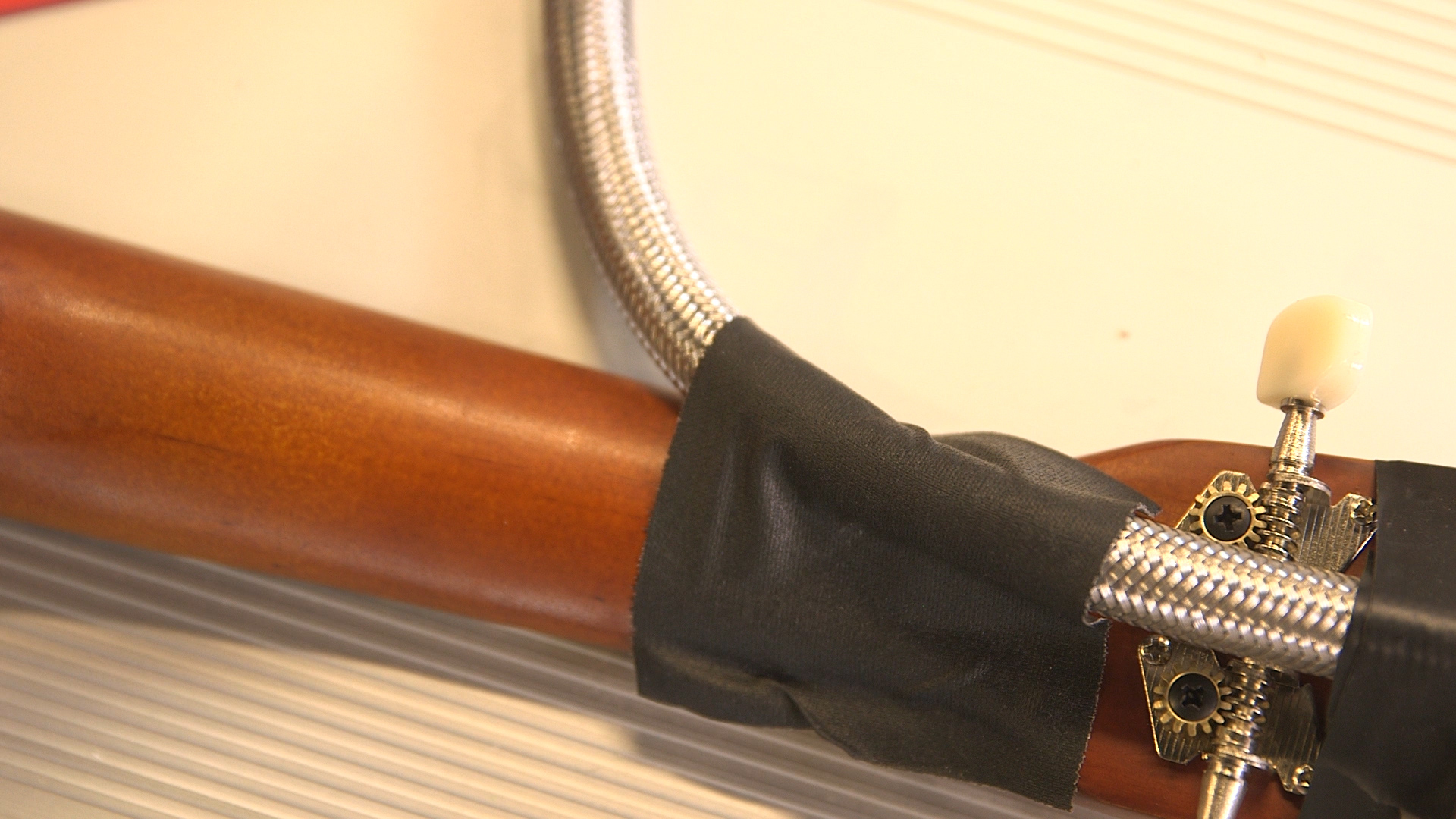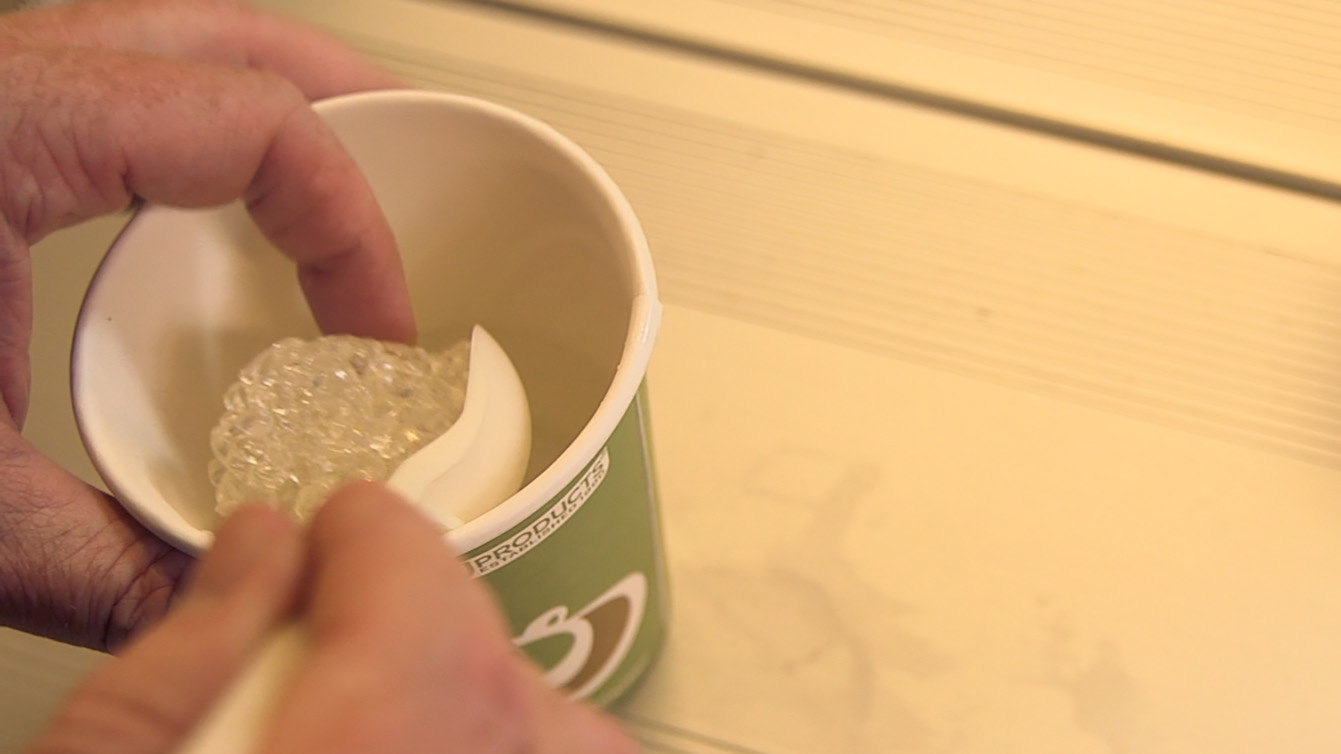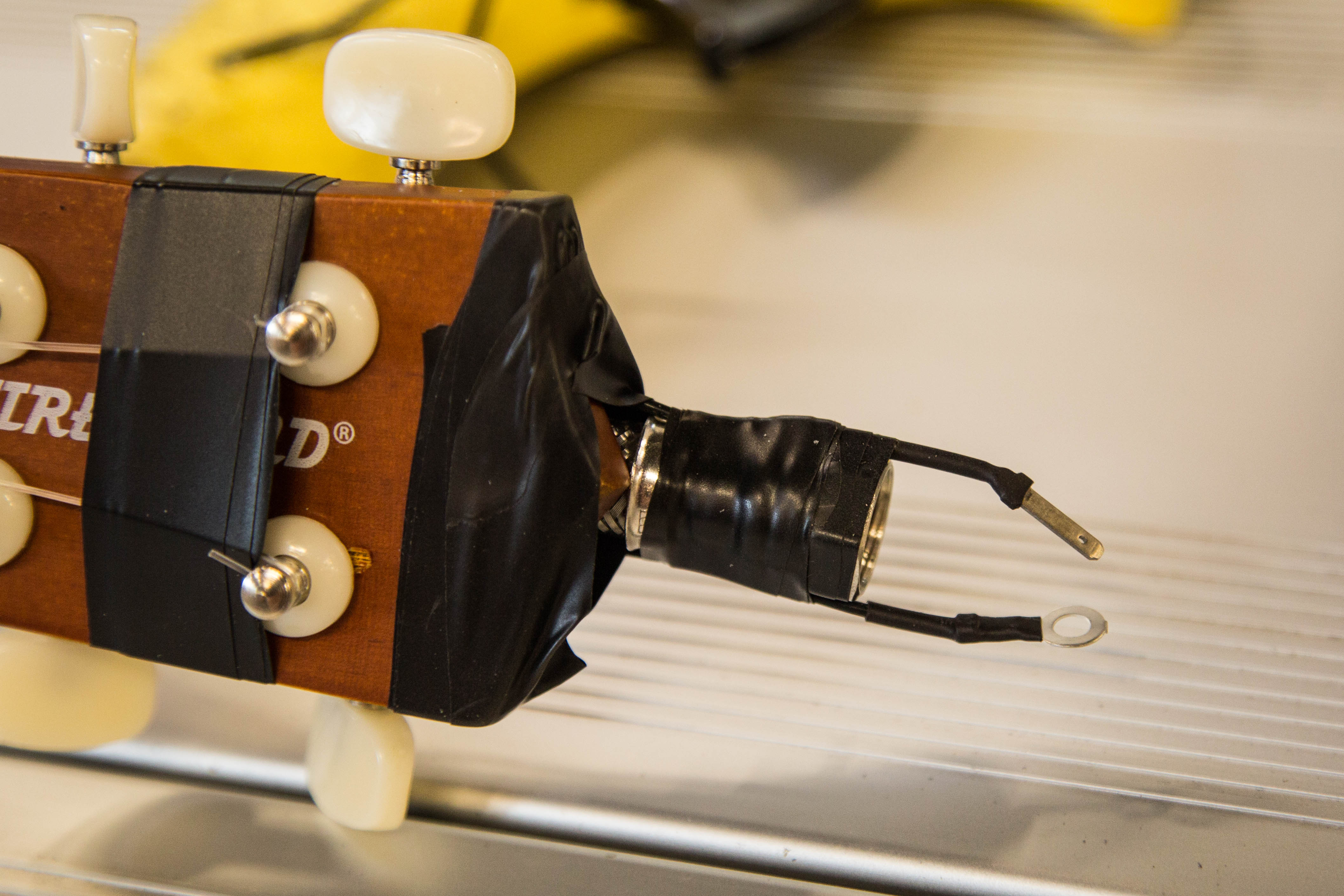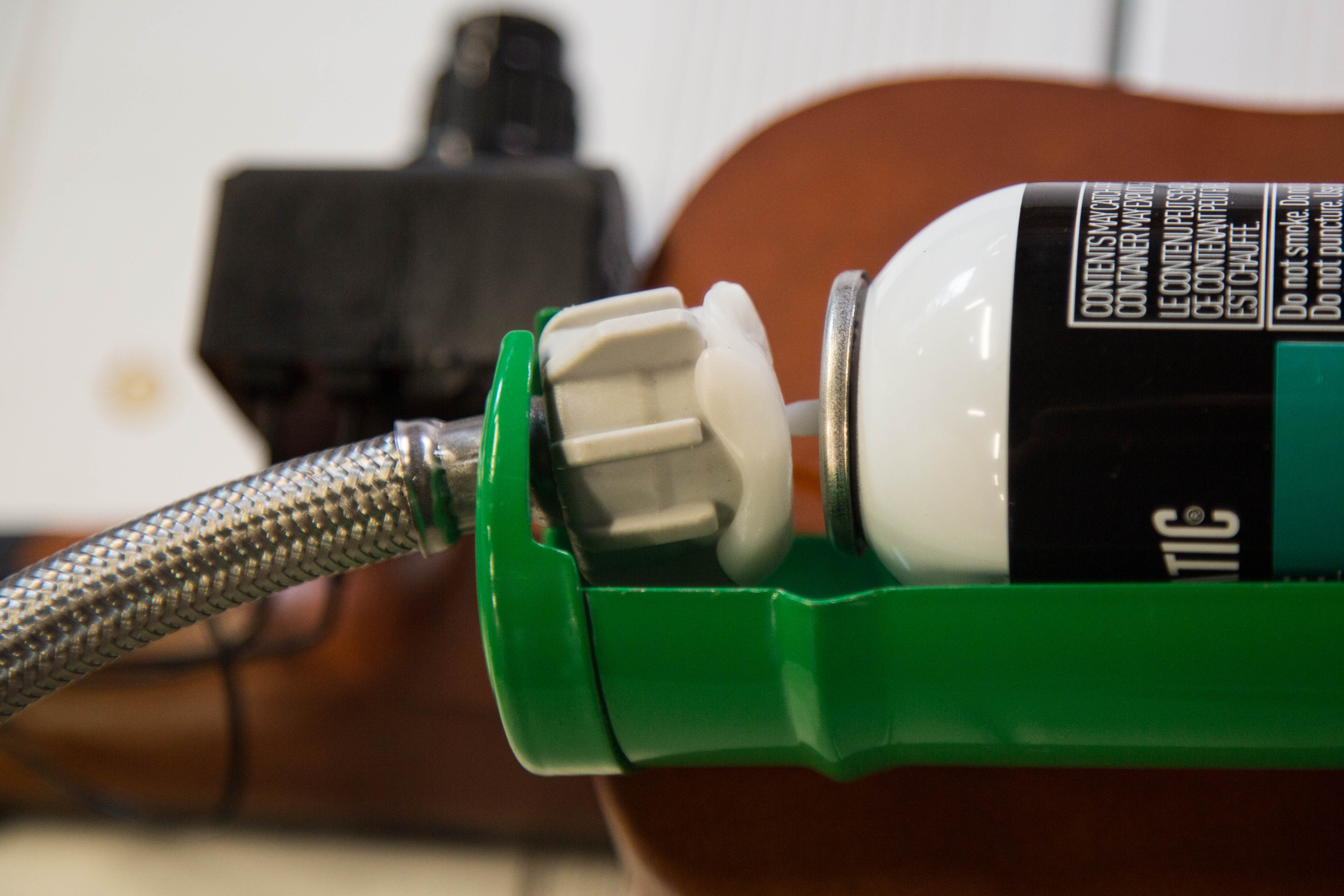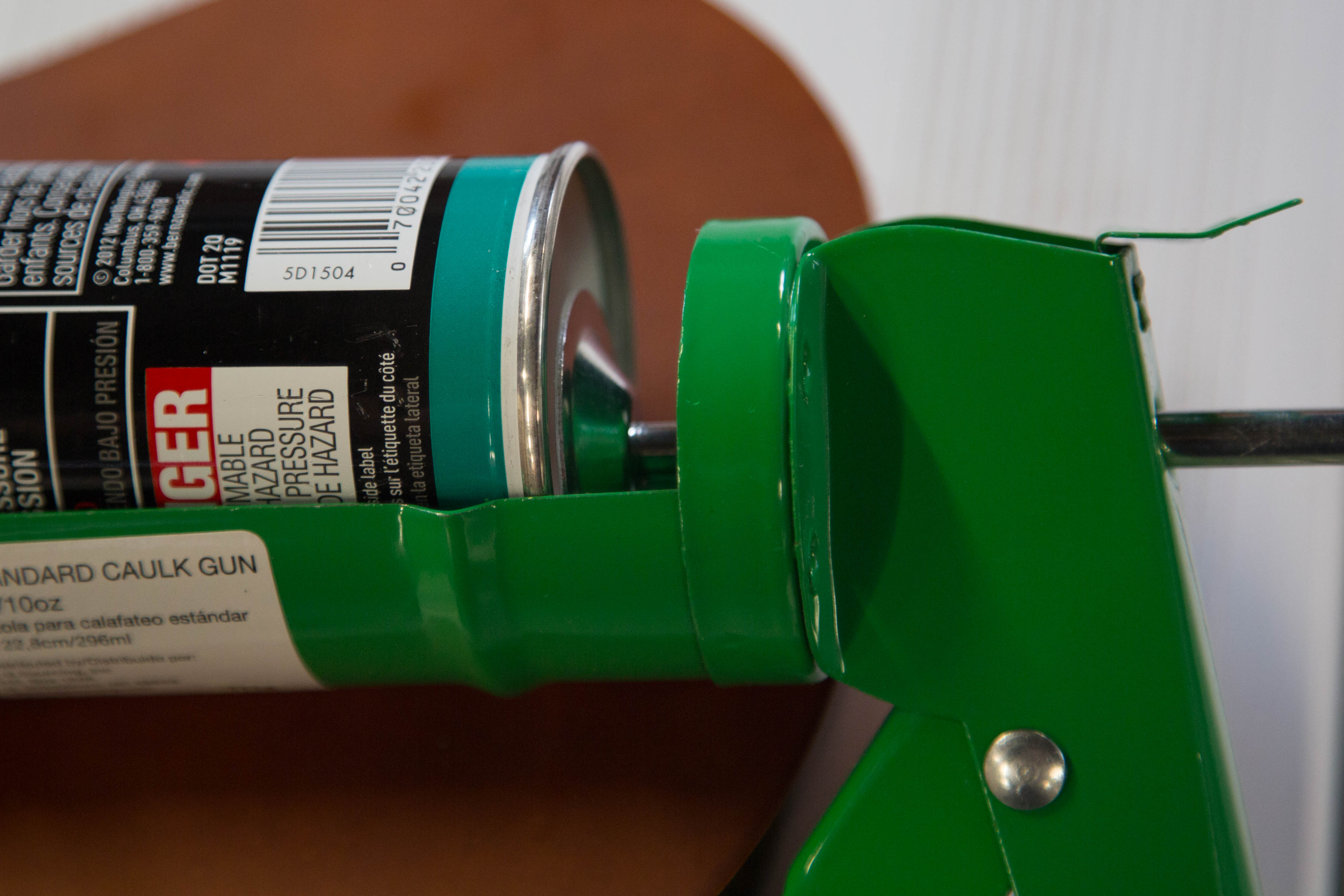
The inspiration for this project was the Doof Warrior’s flamethrower guitar from Mad Max. Nothing says rock-n-roll more than actual fire entwined with your tunes! This guy was completely ridiculously over the top and I loved it! The the entire movie he only cared about one thing, playing his music and spraying his fire. Even when people were having fist fights literally on top of him, he just wanted his guitar back.
I felt that the scale of the one in the movie was a bit outside my comfort zone, so I decided to build a flamethrower ukulele instead.
I didn’t want to try to replicate exactly what he had, and I also wanted to scale things down to be marginally safer. My version can be built from hardware store parts in a very short amount of time.
Note: This could be upgraded with a microcontroller and servo for flame release. I felt, however, that this silly project didn’t need the complexity added.

Warning: This project is incredibly dangerous. Make sure that you have a functional fire extinguisher ready, you are in a well ventilated area, are wearing ample non-flammable safety gear, and you have friends there to help in case of an emergency.


